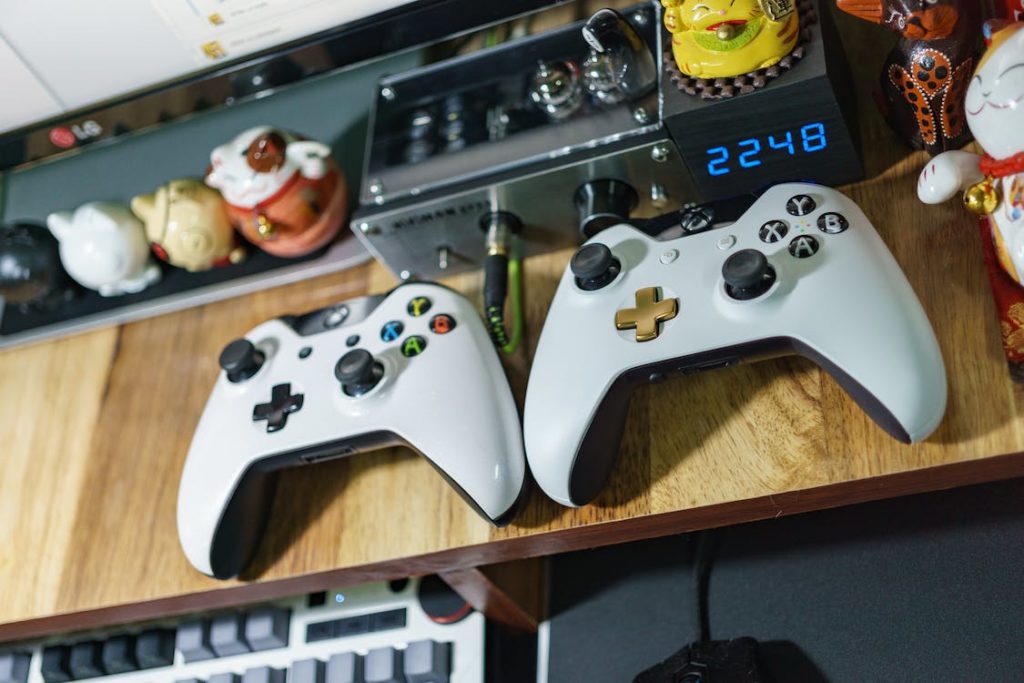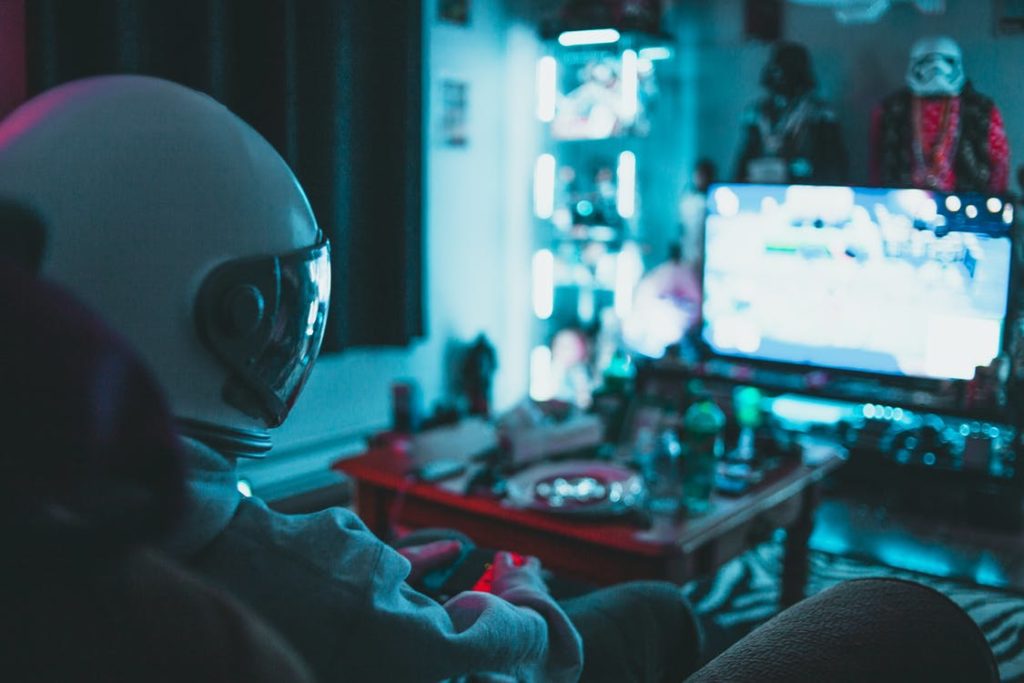Anyone out there thinking about making a new game has posed this question: how much would it cost to make a video game? In many ways, it’s not an easy answer, as making video games can be a very complex and time-consuming task. Not only that: with its multitude of genres and formats, video games are one of the most varied forms of media out there. So much so we can that no game is the same.
The simplest answer to this question is also the most frustrating one: as all things in life, it depends!
However, it’s a fact that the price tag for the development of a game can vary from a few dozen hours to hundreds of millions of dollars. This staggering range is caused by the aforementioned variety of games – from simple 2D platformers and mobile free-to-play games to high-end, fully-fledged 3D games with astonishingly realistic graphics.
As each game is unique, every single one of them also has a different set of challenges and technical requirements that must be met or, in some cases, broken through. All in all, it should come as no surprise that there is no definite answer to this question.
With that in mind, in this post, we will try to give you an insight on how much developing a game costs by going through some examples, a brief explanation of factors that drive their cost up, which professionals work on a game and, finally, a way to estimate the costs of your game. Let’s get started!

The cost of making a game: some examples
As we know, some games are prohibitively expensive while others are made on a shoestring budget. For this reason, we will list three very expensive games and three games that were huge successes despite their low development budget.
A caveat
Before we go through, one thing you have to keep in mind is that it’s very, very unusual for development studios to provide this kind of information in their reports. The majority of values found over the internet are based on rough estimates that take these three factors into account:
- How long it took to make the game;
- The size of their game development studio – in other words, how many employees they have;
- The sum of the salaries of everyone making the game – game designers, modelers, programmers, engineers, UI/UX designers, QA, … – which also has to account for the studio’s location.
As such, estimates for bigger games are to be taken with a grain of salt, but shouldn’t deviate too much from the actual total cost either.
Cyberpunk 2077 – $315 million
CD Projekt Red’s biggest title yet had an estimated budget of $315 million USD – with around 45% of it being used for marketing campaigns prior and after the game’s launch. Currently set to become this decade’s Skyrim with an official modding tool, Cyberpunk 2077 is definitely one of the games to check out despite its numerous issues at launch.
Here’s a fun fact: CDPR hired actual city planners to help design and map Night City, making it one of the most realistic and vibrant cyberpunk environments of all time.
Grand Theft Auto V – $265 million
While it is no surprise that this game comes up as one of the most expensive games ever made, seeing that its budget is estimated at around $265 million dollars gives you a glimpse of how costly game development can get.
Big and ambitious, all this money injected into the game paid off in ways that were hard to imagine – Grand Theft Auto V sold over 110 million copies and made over $6 billion dollars in revenue since its release, far surpassing the development and marketing costs.
Final Fantasy VII – $145 million
The main reason why FF7’s development was so costly is its heavy use of cinematics and 3D graphics, which were very advanced at the time of their release.
By the way, did you know that the original Final Fantasy VII game was more expensive to develop than its remake?
Rocket League – $2 million
One of the most popular e-sports titles out there, Rocket League has a very simple premise: it’s soccer, but with turbo cars. One of its main selling points is that it’s very easy to get into while also being very hard to master. The game itself had a modest budget when compared to better known competitive games, but it’s been going strong – and there are no signs this trend will stop any time soon.
Hollow Knight
This game is one of those that had a very limited budget and a tiny development team. Despite that, Hollow Knight managed to get a 90 Metacritic score on its Switch version, with user scores averaging 9 across all platforms. Its difficulty and charming hand-drawn art are two of its biggest selling points, attracting casual gamers looking for a challenge and Metroidvania veterans alike.
Among Us
This game was developed by a small team of 3 people and, in 2020, Among Us grabbed the headlines. In-game clips, streams and memes were all the rage for most of that year, which helped boost the game’s popularity even further. The innovative social aspect that Among Us brought to the gaming scene is what really got people hooked – all that on a thin budget.

What affects the cost of a game?
The development of a game is a complex endeavor. Combining art, code and sound into an enjoyable experience is much harder than most people think. People are right when they assume graphics are the main factor driving the cost of game development up, but they don’t tell the whole story. Here is a non-exhaustive list of other factors that will influence the cost of making a game:
- Your game’s functionality and design, which usually takes multiple iterations to make the user experience feel amazing. This includes having a fitting soundtrack, responsive GUIs and good sound effects for that satisfying audio feedback
- How complex it is, as you have to design, program and integrate everything as seamlessly as possible. Complexity also goes hand in hand with development time, which will increase your expenses proportionally
- Platforms you’re releasing for, since some game engines and platforms may require you to pay additional fees
- Where your studio is located, as having to keep up with rent, employees’ salaries and other expenses can rack up quickly
- Whether you are outsourcing parts of your game creation or not. Indian and Chinese developers, for example, are on average 5 times cheaper than American ones ($20/h vs $100/h), but the quality is generally lower
- Central and Eastern European developers will set you back $40 to $80 per hour, but they are often a great compromise between price and quality
- Which features will be implemented in your game. Complex games with full multiplayer support tend to be a lot more expensive than their single player counterparts. Implementing cross play is also another thing that, while awesome to have, will incur additional costs which could be too much to bear for smaller studios
- How and where you will publicize your game, as you have to make yourself seen and heard as a newcomer to game development. Even as a solo developer or as a small indie company, expect to dump thousands into marketing
Estimating the cost of your game
Now that you have an idea about what may drive the development cost of a game up, it’s time to talk about numbers! Like we have stated before, no game is the same and there are no rules set in stone. As such, giving you a precise estimate is very, very hard.
However, we’re going to use the power of math to give you a rough estimate on how much money you will have to spend to develop your game! While this is not a “one size fits all” calculation, it should serve as a guideline for any future, more detailed estimates.
How much does it cost to make a game: main metrics
There are three main factors that you will have to account for while budgeting your game:
- How many people will work on this project. Let’s call this value p (for people)
- How much they will be paid every month (taking your region of choice into account). Let’s call this value s (for salary)
- How many months it will take to complete your game. Let’s call this m (for months)
A very simple example
It’s time to plug some values in for a very simple game!
Let’s assume your team will consist of p = 5 people, which should include one person for each section of the core creative team – a game designer, a developer, an artist/animator, a tester and a sound designer.
For the sake of simplicity, let’s assume that they all have the same salary of s = $5,000 per month (which is around $30 per hour).
Finally, let’s assume that this project will require m = 4 months from start to finish.
Then, the final cost equals p x s x m = 5 x $5,000 x 4 = $100,000 (which is $25,000 a month)
Other details to keep in mind
Be mindful, however, that this does not take rent, bills and marketing expenses into account. Be sure to add an extra 20% to 100% of your budget to invest into making your game known. You can’t make any money back if no one knows about your game, right?
Don’t forget to choose the game engine which is best suited for your intents and purposes – some require you to buy additional licenses once certain revenue thresholds are met or even from the get go.
It’s also known that, on average, developing an iOS game ends up costing 10%-20% more than developing a game for Android. However, cross-development allows you to create games that are suitable for both platforms at the same time, greatly simplifying their implementation and deployment processes.

What are the professionals involved in game development?
Glad you asked!
In order to have an even deeper grasp on why games can be expensive to make, you have to understand that a significant portion of the cost is comprised mainly by the hourly rates of those who are working on the game. Generally speaking, most studios – even the smaller ones – will have a core team that contains these professionals:
Game designers
They are the professionals who are tasked with the design of the game’s content, mechanics, win conditions, worldbuilding/lore and all that is closely related to them. In larger projects, they are one of the key elements to ensure a game’s success and are responsible for the creation of a game design document, which has to be approved by the customer. It then becomes the reference point for the rest of the team as everything will be built according to the game design document.
That said, when it comes to simpler projects, such as casual 2D mobile games, the responsibilities of a designer may be shared among other team members to cut down on costs.
Developers
Video games are often made with the aid of game engines like Unity and Unreal Engine, which respectively use C# and C++. Mobile games are built different and require deep understanding of Java (for Android) or Swift (for iOS). As such, it’s very important to find qualified professionals to be part of your project.
Since development is essentially coding elements with which the player will interact, having a proper game design document and ready-made art (or placeholders) are of great importance to avoid wasting time (and thus money) down the line.
Artists and animators
Games can be made in 2D or 3D. Since 2D games usually only require drawing the assets and animating them is relatively easier, they tend to be cheaper and their development can be completed in less time. On the contrary, when creating art for 3D games, you have to create the model from scratch, rig it, animate it and ensure it blends well with the game… and then repeat this process however many times necessary.
Not only that – environments have to be created as well and populating 3D spaces with beautiful elements takes way more time than 2D environments.
Usually speaking, animators add movement to otherwise static assets while artists also work along UI/UX designers (or take on their roles) to create smooth interfaces.
Depending on how simple your project is, a single artist and a single animator may be enough. On the other hand, for very complex games, chances are you will need a few dozen professionals to take on the challenge.
Sound designers
Even if it doesn’t feel like it, music and sound effects are extremely important. Background tracks help set the tone and mood of the current scene while sound effects enhance the immersion and gameplay even further.
Testers/Quality Assurance
Last, but not least, are the game testers, which make up one of the most important steps in the game development cycle. They are responsible for ensuring that users will receive the product they expect with the minimal amount of bugs.
Furthermore, QA professionals also check whether visual elements are being correctly displayed, if the game is well balanced, if the grind feels just right, if the responses to player actions are the right ones, if IAPs (in-app purchases) are being delivered correctly and so on.
Without them, you could be at risk of spending thousands of dollars on a game that will not run on older Android/iOS versions, which comprises roughly a third of all mobile users, or that it will be published with a faulty monetization method, which players could exploit and leave you or your game studio penniless.
As you can see, cheaping out on QA professionals might come back to bite you down the line and bring devastating consequences to your game. So, do yourself and your players a favor by hiring qualified professionals for this task!
Choosing the right game studio
Now that you have a deeper understanding on what makes the budget of a game, you might consider hiring a game development studio to create the experience of your dreams – or have a shot at making an indie game yourself.
As you were able to see, the more time you need to complete a project, the more it will cost. This time (and, thus, the price) also increases proportionally with the complexity of your game. In addition to that, we showed you a very rough, bare-bones way to estimate how much money you will spend developing your game.
If you are looking to save time and, with it, expenses when hiring a game development studio to bring your game idea to life, looking for a great team of seasoned professionals is imperative!
We are MainLeaf, a game development studio that has been making fantastic games on-demand for over a decade.
It’s very simple to get started – all you have to do is head to our main page and request a quote by telling us more about your game’s idea!

